Table of Contents
Best 10 Common Animals In Mana Pools National Park
The best 10 common animals in Mana pools national park in Zimbabwe include; Elephants, Lions, Leopards, Crocodiles, Zebras, Waterbucks, Hippopotamus, Primates, Birds and Fish. Mana pools national park is a blessed wild area with several wild animals and birds living in a beautiful environment consisting of different landscapes such as waterfalls, valley, forest, among others.
Mana Pools National Park is located north of Zimbabwe and is one of the least developed parks in the country with a very rural environment. The park is found in the province of Mashonaland west in Zimbabwe. Mana Pools national park was named after the four meandering pools. Its called “Mana” because of the “Four” permanent pools. The Khoisan were the original people who lived in this place with evidence of their paintings still present in the protected areas they lived.
1. Elephants In Mana Pools National Park
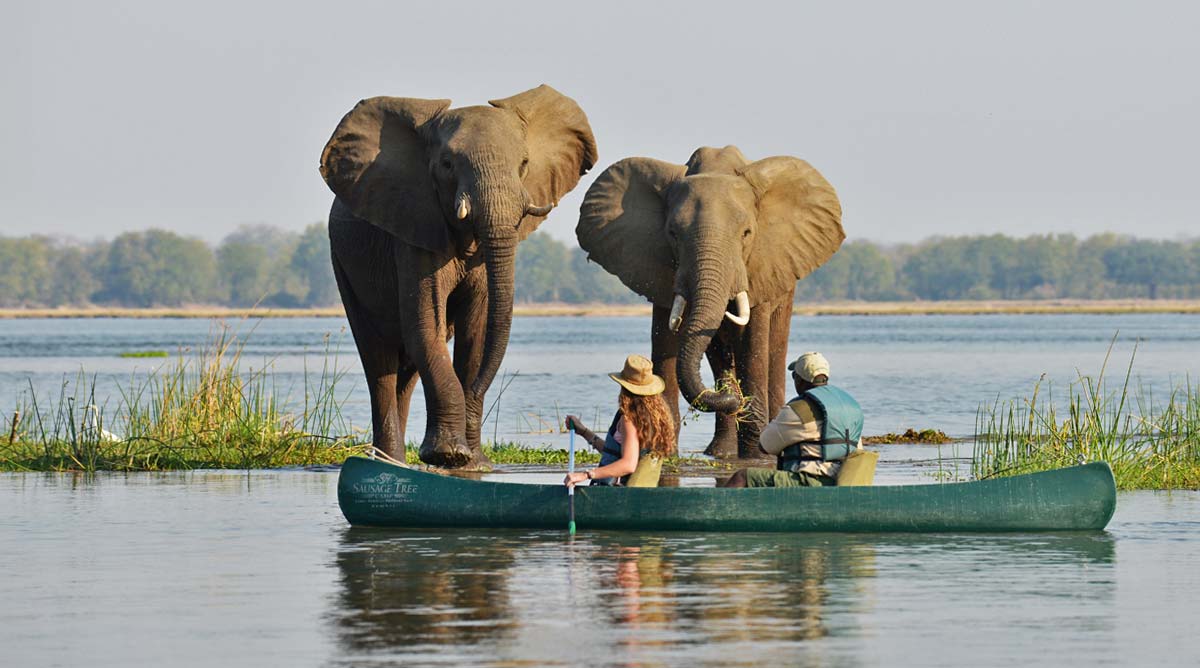
An Elephant is one of the largest land animals in Mana Pools national park in Zimbabwe and is one of the African Big Five animals. Mana pools national park elephants are the most unique elephants one would really wish to site an eye at. The elephants stand on their hind legs as they pick leaves from the trees. This leaves the tourists with big majestic smiles on their face and wonderful memories to tell.
These elephants stand on the hind legs because they want to get tall and eat the fruits and leaves of the trees in the park. Tourists planning to go for elephant tracking, are to wake up early in the morning and enter the bush with accompany of a tour guide and the game ranger. Tracking down the foot steps of the elephants and searching for them in the bush. This experience is one of the most popular and best practiced in Mana pools National park.
Standing on a the two hind legs aside, an elephant is a unique animal with amusing features. A big body and a small tail also is an amazing thing to watch on an elephant. The trumpet is also another beautiful feature to look at on an elephant. It helps it communicate, breath, eat, defend its self among other uses of the trumpets.
2. Lions In Mana Pools National Park
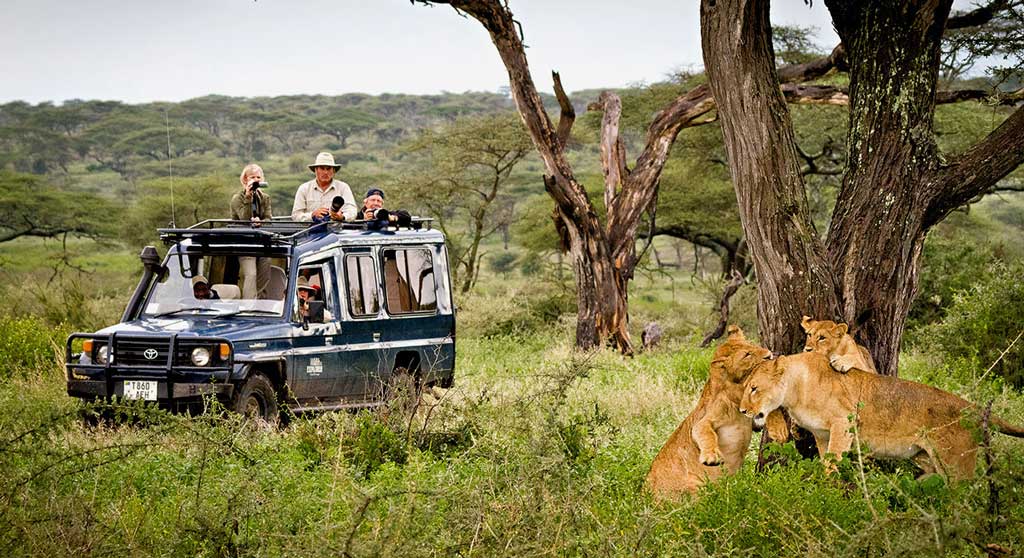 |
A lion is one of the Big 5 animals and its considered the king of the jungle. Its pride is that, it hunts others and none hunts the lion back. Lions and leopards are the most carnivorous animals in Mana pools national park. They concentrate in the southern part of the park. Tourists do lion tracking in Mana pools are protected by the game rangers who carry guns to shot and scare the lions in case they caused threat.
Visitors tracking lions also are advised to move as a group for easy protection from animals by the game ranger. These lions concentrate during the dry season around the chitake spring and for visitors tracking down lions to watch how they hunt and live, that’s the right timing. Lions target other animals such as antelopes, zebras, impalas among others as they move to chitake springs to drink and they hunt them down as their prey.
3. Leopards In Mana Pools National Park
Leopards are animals that are shy in nature and that makes them hide away during the day making it hard for tourists to easily spot them during the day drives. Shy as they are, they are one of the big five animals in Africa and it feeds on meat of other animals. The leopard looks like a cheetah and many people mistake the two animals but there is a difference between the two. A leopard has darker spots on its skin and its body is bigger than that of the cheetah. The cheater has long body structure with a very small head.
The leopard feeds on animals such as the Waterbucks, Warthogs, Eland among others in the national Park. Leopards in Mana Pools National Park target other animals such as antelopes, zebras, impalas among others as they move to chitake springs to drink and they hunt them down as their prey during the dry season. This is why its best to visit Mana Pools national park during the dry season for visitors have spectacular views in the wild.
4. Crocodiles In Mana Pools National Park
Crocodiles are one of the most amazing animals to watch while at Mana pools national park because of their intelligence in the way they hunt other animals in the water. Crocodiles can be found on the shores of river Zambezi as they rest along the shores. Crocodiles can be still as if its dead and some animals get trapped by that sense. Some birds fly and stand on their backs freely and this gives a mistaken mind to other animals. The crocodiles open their mouths and the flies come because of the bad smell from their mouths and they eat flies too.
Crocodiles can swim and move on land too. So they can wait for other animals to come and drink the waters of river Zambezi and then hunt them down. Crocodiles normally hunt for animals trying to cross the water body and those at the shores trying to drink water. They swim deep towards the prey and then all of the sudden appear and grab the prey. With its large strong teethed mouth, it can hold its prey till it dies. The crocodile feeds on Zebras, Waterbucks, Buffalos, Eland, Flies among others.
5. Zebras In Mana Pools National Park
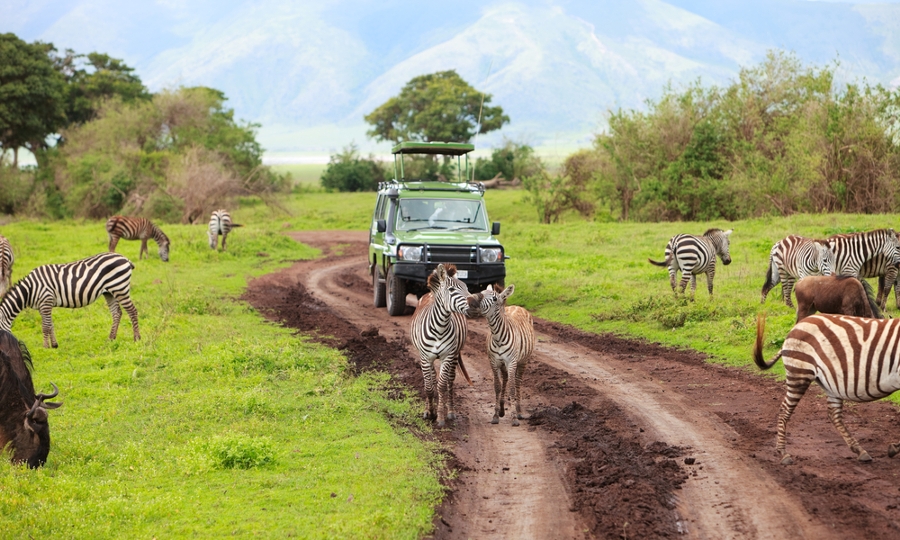 |
Zebras in Mana pools national park are one of the interesting animals to watch while in the park. Zebras are unique in nature with their black and white stripes all around their bodies and are as distinctive as human fingerprints. The zebra has a body like that of a horse but they differ in terms of how the heads appear. When a young one of a zebra called a foal is born, they have reddish-brown stripes on their whole body which gradually become darker and change to black and white as they grow older.
6. Waterbucks In Mana Pools National Park
Waterbucks are some of the unique animals a tourist should expect to meet while in Mana pools national park. They are called waterbucks because of the ability to repel water. Waterbucks have a shaggy hair on its body with brown and grey coats on them that emits an oily secretion from the sweat glands that enable it to repel the water.
Oil is less dense than water and that allows the waterbucks body to resist the water. Waterbucks also have large, rounded ears and white patches above the eyes, and around the nose and mouth and throat. Making them so attractive to the tourist to have a look at them.
7. Hippopotamus In Mana Pools National Park
Hippopotamus are one of the best good animals to watch in Mana pools national park. A hippopotamus is also called a River horse for their ability to move fast in water. Hippopotamuses are animals that can live both in water and on land. They have a respiration system that allows them to breath both in the waters and on land. A hippo looks like a pig in the way their structure is so some people call them “Big Pigs”.
A hippopotamus has a large body, brown in color, with a very large mouth. Their mouths are actually the best reason why tourists visit the park and watch hippopotamuses as they swim in the waters opening their mouths and its more nice watching a hippo fight for territories, they keep opening their mouths biting each other.
8. Primates In Mana Pools National Park
Mana pools is also blessed with some primates that are also of much interest to the tourists. Some of the primates one can find in Mana pools national park include; Monkeys are the main primates one can find in the park and also some baboons. These animals like playing with visitors as the tourists feed them with some fruits especially the sweet bananas. Visitors have fun when the animals drop down the trees and play around with them and also love watching the animals flying all over the trees making the visitors experience perfect.
9. Birds In Mana Pools National Park
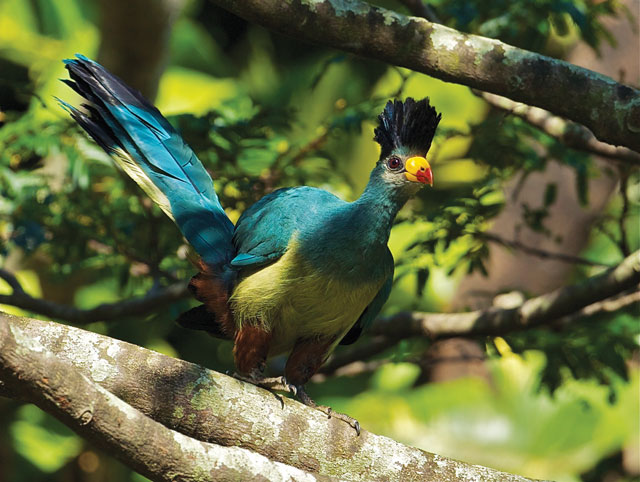 |
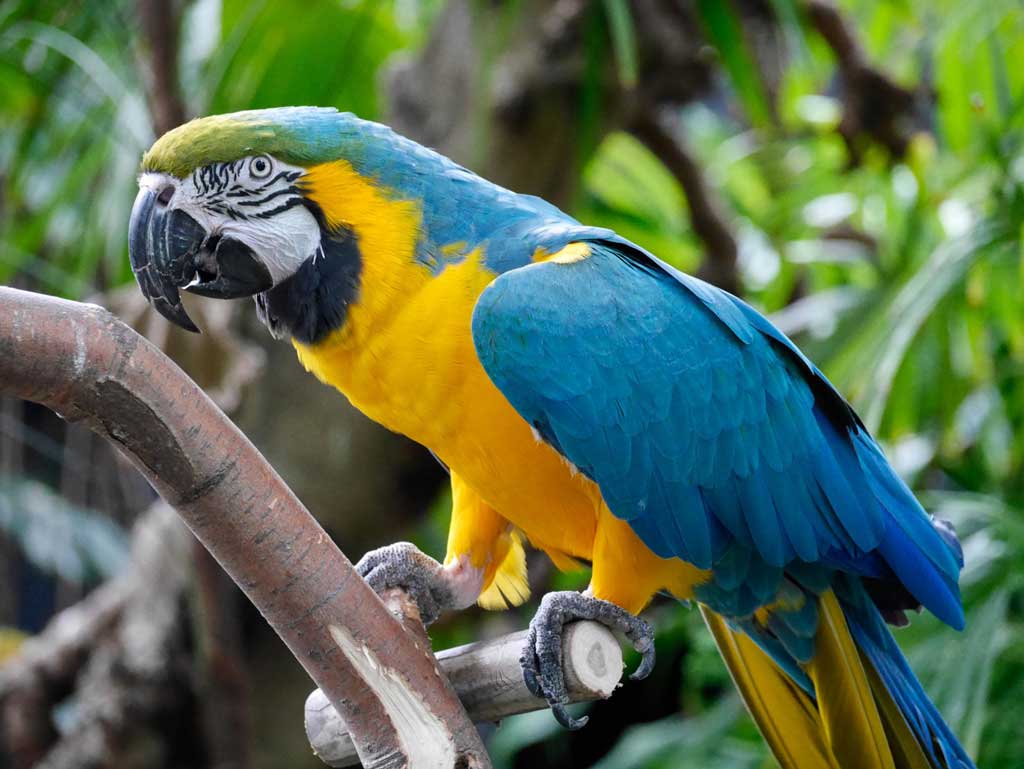 |
There is a diversity of birds in Mana pools national park. Well viewed at the shores as visitors go for canoeing in the pools and also for visitors having safari walks in the park. There approximately 447 bird species in Mana pools national park with beautiful scenery creation and sounds to the environment providing a spectacular experience to the visitors. Birding is one of the activity visitors engage in, while at mana pools national park.
There many species of birds that can be found in Mana pools national park and these include; White-faced whistling duck, fulvous whistling duck, Egyptian goose, Hottentot teal, African black duck, Helmeted guineafowl, Harlequin quail, Coqui francolin, Greater flamingo, Little grebe, Red-eyed dove, Laughing dove, Yellow-throated sandgrouse, European nightjar, African palm swift, Common swift, Senegal coucal, Yellowbill, African crake among other bird species.
10. Fish In Mana Pools National Park
Fishing in Mana Pools National is another best activity. Fishing can be done on the river Zambezi, and the four pools of Mana. Visitors interested in fishing in the park, have several ways in which they can catch the fish. Some of the options a visitor can select is the Hooking method, Dip netting method, the basket method, fish net, among other methods.
Best Time to Visit Mana Pools National Park
Mana Pools Climate
- Winter months – mid-May, June, July, and early August – have gorgeous blue sky and cool evenings and are warm.
- September to May are the summer months. With scorching to extremely hot days and warm evenings.
- Rainy season – Typically between mid-November and April, but rain can fall outside of these months.
When is the best time to see wildlife in Mana Pool National Park?
August, September, October, and early November are the greatest times to observe animals in this park. Due to the great scarcity of water in the interior, the animals have naturally flocked to the river and natural pools of Mana. During the dry season, Mana Pools National Park in Zimbabwe offers walking safaris. Mana Pools is currently experiencing its dry season.
During the rainy season, which lasts from late November to April, an entirely different park appears. Arid savannahs become verdant plains with abundant grazing. Some permanent species remain, despite the fact that many animals disperse inland and make game viewing difficult.
This is the verdant season, and it is during this time that the park and its inhabitants are revitalized by the availability of food. There are newborn animals everywhere, and the bird population is enormous. Frequently, road access is restricted.
How To Reach Mana Pools National Park
Mana Pools national park is well known as one of the remote areas in Zimbabwe. Visitors have to drive from Harare the capital city on a tarred road up to the basement Zambezi escarpment and turn off the tarred road onto a 43.5 mile dirt road and travel towards Nyamepi Camp and there will be the visitor in Mana Pools National Park.
Mana pools is a secluded park. The park is located in the extreme north of Zimbabwe on the Zambezi River, far from any major town or human settlement.
Drive approximately 310 kilometers from Zimbabwe’s capital city (Harare) and obtain a free Manapools entry permit from Marongora reception. The Marongora reception is located in the heart of the Zambezi escarpment. After obtaining the permit, you descend the Zambezi escarpment for approximately 10 kilometers before turning right onto a dirt road that will take you approximately 77 kilometers into unspoiled bush to Nyamepi Camp.
When returning from Chirundu, you obtained the same free permit from the Zimbabwe Parks office at the Chirundu border posts. Proceed from the Chirundu border post to the Manapools turnoff, which is 40 kilometers along the Harare highway.
Frequently Asked Questions
In Conclusion
Mana pools is one of the best African national parks with diversity of wildlife, water bodies, birds, worthy visiting again again because of the exceptional experience it gives to the visitors. Kubwa five safaris, a tour company in Africa is a trustworthy company where a tourist is assured of best experience achievement while on a trip with them. You can book with Κubwa five safaris in their offices or online. Contact Kubwa Five Safaris for more details.
